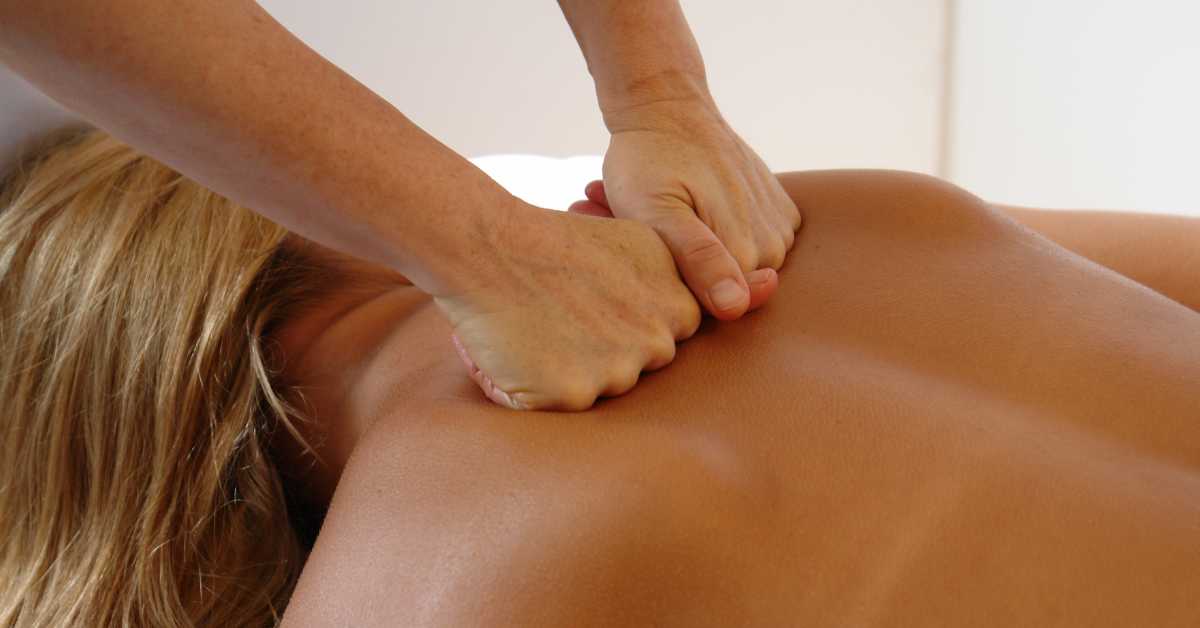Feeling stiff and sore? It’s time to get serious about muscle relief. Swedish vs Deep Tissue massages—which one actually works for you? We’re cutting through the fluff to break down the real benefits and techniques behind these two popular styles. Whether you need to relax or dig deep into stubborn knots, this guide will help you choose the right massage to get results. Let’s get into it.
Swedish vs Deep Tissue Massages – Overview
Swedish and deep tissue massages might sound similar, but they’re worlds apart in how they tackle your muscles. Swedish massage goes easy, targeting the surface to help you relax. Deep tissue? It’s all about digging into those stubborn knots and breaking up tension buried deep in your muscles and connective tissue. Same goal—different game plan.
Swedish massage is a light, relaxing treatment that uses gliding strokes to soothe tense muscles, improve flexibility, and increase circulation. It can help relieve stress, ease pain from tension headaches or sore muscles after exercise, and even enhance your overall sense of well-being.
Deep tissue massage focuses on releasing chronic tightness in specific areas of your body by applying pressure directly to tight muscles. This type of massage is often used to treat injuries such as sprains or strains because it helps break up scar tissue and adhesions (bands) that form within your muscles when you’re injured. Deep tissue massage may also be recommended if you have chronic pain or discomfort in certain parts of your body due to an injury or illness (such as fibromyalgia).
Be sure to see my complete breakdown of top-rated massage chairs — including models best suited for arthritis, back pain, and hip stiffness — don’t miss our expert buying guide: Best Massage Chairs for the Money! Discover real therapeutic features, verified user feedback, and manufacturer specs that matter most for pain relief.
Description of a Swedish Massage
What is a Swedish massage?
Swedish massage is a relaxing and therapeutic form of massage that can be used to treat a wide range of musculoskeletal problems. The massage therapist uses long strokes to relax the muscles and connective tissue, and may also use kneading, friction, vibration, or tapping movements.
The massage therapist will apply oil or lotion to your skin before the massage begins. Then they’ll use their hands and fingers to knead your muscles in a rhythmic motion. Swedish massage can also include passive stretches where you’re asked to hold a pose for several seconds before returning to an upright position.
During a Swedish massage session, you’ll lie on your back with your head resting on a small pillow. The masseuse will then begin by applying pressure with their thumbs along your spine while working their way up toward the base of your neck. Your shoulders will be massaged next; then they’ll move down each arm toward your wrists before working across your chest and abdomen using both hands simultaneously on each side of your body (this is called cross-fiber friction).
Once they’ve finished with these areas they’ll start working on your legs from the ankles up toward the thighs.
Finally, they’ll finish up by applying pressure with their thumbs at various points along each of your legs, arms, and back. The whole process takes about 30 minutes to an hour and is definitely worth it if you’re looking for long-term relief from sore muscles or chronic pain.
Swedish Massage Video
See this Swedish Massage video for techniques
The Swedish massage technique reduces tension and stress, increases circulation, and promotes relaxation.
It involves long strokes to loosen the muscles and connective tissue, which in turn helps relieve pain and stiffness. The strokes are performed using the palms of the hands, thumbs, forearms, and even elbows to apply pressure to specific areas of the body. The massage therapist may also use their knuckles or even their forearm to put pressure on tight areas of your body.
The goal is not to manipulate the body into a different position—it’s about helping you feel comfortable with your current physical state through relaxation techniques such as rubbing or tapping along your spine or giving gentle squeezes to your shoulders.
Full-body Swedish massage
A full-body Swedish massage is a massage that focuses on the entire body, from head to toe. The massage therapist will use long strokes and kneading techniques to help relax your muscles and improve your circulation. The massage may also include hot stones or warm towels placed on specific regions of your body.
Benefits of Swedish Massage
Swedish massage is a great way to relax, unwind, and de-stress. It’s also great for many other things:
Relaxation
Swedish massage is one of the most popular forms of massage, and it’s no surprise why! The gentle strokes and long holds help your body to relax, releasing tension and promoting a sense of calm.
Pain Relief
Swedish massage can be used on sore muscles in order to relieve pain and inflammation, making it ideal for those with chronic pain conditions or injuries that require regular treatment.
Improved Circulation
Massage has been shown to improve blood flow and circulation throughout the body, which can help reduce pain when applied to specific areas (like sore muscles), as well as promote overall health by improving the delivery of oxygen throughout your body’s tissues so they can function at their best!
Do Swedish massages hurt?
Swedish massages do not hurt. In fact, they are considered among the most relaxing and gentle types of massage.
They focus on stretching and manipulating muscles and connective tissue, rather than applying pressure to specific points in the body. This is why Swedish massages are often used as a way to help people relax their minds and bodies—they feel good in a way that’s not too intense or overwhelming.
Although Swedish massages do not hurt, they can be uncomfortable if you’re not prepared for them. The first time you get one, it’s a good idea to tell your therapist if there are any areas that don’t feel great when being pushed or pulled on.
Description of Deep Tissue Massage
What is a Deep Tissue massage?
A deep tissue massage is a form of massage therapy that focuses on realigning deeper layers of muscle and connective tissue. Deep tissue massage is often used to treat chronic pain and tension, injuries, or soreness in the muscles or joints.
During a deep tissue massage, the therapist uses slow strokes and sustained pressure to relax muscles. The therapist might use knuckles or elbows for deeper pressure, and may also stretch your muscles longitudinally. This helps loosen up tight muscles, relieve pain, and improve circulation.
Deep Tissue Massage Video
See this Deep Tissue Massage video for techniques
Deep tissue massage focuses on the deeper layers of muscle and connective tissue.
Deep tissue massage can be helpful for many conditions, including chronic pain, tension headaches, low back pain, and postural problems. It also can help athletes recover from injuries faster.
During a deep tissue massage, your therapist will use his or her hands to apply pressure to specific areas of your body in order to help relieve tension in those areas. The massage therapist may use a massage gun, knuckles, elbows, or even feet to apply pressure to these areas. The therapist will also use techniques like stretching and compression as well as joint mobilization to help reduce tightness in your muscles and increase flexibility in your joints.
Benefits of Deep Tissue Massage
Deep tissue massage is a type of massage that focuses on the deeper layers of muscle and connective tissue. The purpose of deep tissue massage is to relieve tension in the muscles, which can often be caused by chronic stress or injury.
In order to achieve this goal, deep tissue massage uses different techniques than other types of massage. These techniques are typically firm and focused on specific areas of the body.
For example, if you have a strained muscle in your back, a deep tissue massage therapist will use their hands to apply pressure directly over that area until it relaxes.
There are many benefits associated with deep tissue massages. They can help release toxins from your muscles and joints, decrease inflammation in those areas, improve circulation throughout your body, reduce pain and stiffness after exercising or working out at the gym (or just everyday activities), as well as an overall increase in flexibility and mobility.
Do deep tissue massages hurt?
The short answer is yes, deep tissue massages do hurt. But the long answer is that it’s not supposed to be painful.
Deep tissue massages are designed to work out knots, tightness, and scar tissue in your body, but they don’t work by pulling on your muscles or bones. Instead, they use pressure points to push into the deeper layers of your muscles and skin until they find what’s causing the tension.
This can feel uncomfortable—in fact, it can feel downright painful—but it won’t actually cause damage or harm your body in any way. That’s why it’s so important that you communicate with your massage therapist throughout the process if something feels too intense or uncomfortable for you; they’ll be able to adjust their technique accordingly so that you get maximum benefit without causing more pain than necessary.
Swedish vs Deep Tissue Massage – Which is best?
Swedish massage is one of the most popular types of massage in the world. It is known for its long, flowing strokes and its focus on the whole body. It helps to improve circulation, relieve muscle tension and pain, reduce stress and anxiety, and much more.
Deep tissue massage, on the other hand, targets deeper layers of muscle tissue than Swedish massage does. This type of massage focuses on realigning deeper layers of muscles and connective tissues—the kind that can cause serious problems with posture and movement if they’re out of alignment for too long—and it’s often used by athletes who need to recover from injuries quickly.
So which should you choose? We think both are great options! If you want something relaxing and nurturing, then Swedish is probably the better option for you. If you’re looking for something more intense (and possibly painful) that will get your muscles back into shape fast, then deep tissue might be better suited for your needs.

Claudia Faucher is a full-time fitness training expert and lifestyle blogger. She is also been a certified Les Mills BodyPump instructor for the past 5 years and a fitness instructor for over 20 years. Claudia is a personal trainer and creates fitness training programs for seniors and people of all ages. She likes to use her skills and experiences to help others on their fitness journeys.
